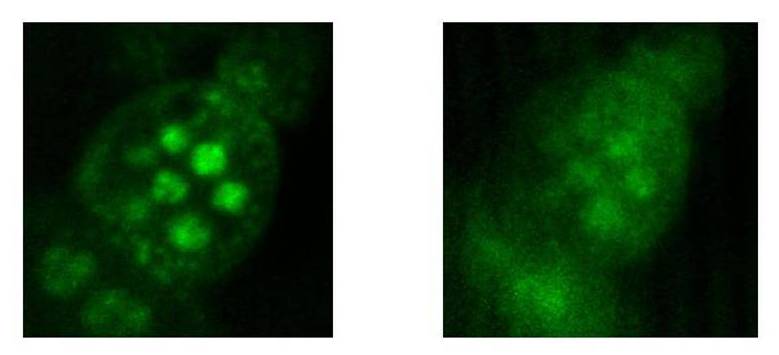Yeda, the technology transfer arm of the Weizmann Institute of Science, has signed a license agreement with ’3i.’ Other microscopy systems based on Weizmann research are being sold by ‘Idea Bio-Medical’
The imaging potential of cutting-edge microscopes will soon be expanded thanks to Weizmann Institute inventions. A licensing agreement for developing these inventions into commercial products has been signed recently between
Yeda Research and Development Co., Weizmann’s technology transfer arm, and Intelligent Imaging Innovations (3i) in the United States.
Amir Naiberg, Yeda CEO: “Yeda’s business development activities cover all areas of science and explore business opportunities all over the world. The current agreement, signed with one of the world’s leading companies in the area of microscopy, is but one example of the great potential of Weizmann’s inventions in the field of physics.”
Confocal microscopy, sophisticated technology commonly used to obtain three-dimensional high-resolution images of living cells and tissues, works by focusing a light beam on the observed sample, illuminating it one point at a time. Sometimes, however, this point-by-point scanning takes too long. For example, in certain brain studies, scientists need to illuminate an entire network of neurons in a particular brain area simultaneously. Such illumination will now be possible thanks to a new Weizmann Institute approach called temporal focusing microscopy, invented by
Prof. Yaron Silberberg and
Dr. Dan Oron of the Physics of Complex Systems Department. As its name suggests, it works by controlling the focus of a laser light beam in time rather than in space: Light is beamed at the sample in long pulses, which shorten when the beam reaches the desired plane, producing the needed illumination. In this manner, a single exposure to a light source can illuminate an entire brain area. The method allows for outstanding precision: pulses lasting several femtoseconds – each femtosecond is a millionth of a billionth of a second – target specific neural network components in a millimeter-thick sample of brain tissue.
Says Dr. Karl Kilborn, Copresident of 3i: “We look forward to incorporating temporal focusing in several upcoming products designed for optogenetics, as well as for other photomanipulation applications. In all such applications, a simultaneous illumination of numerous cells, or numerous parts of one cell in a single plane, is critical. It is essential for understanding the behavior of complex neural circuits or other biological phenomena that occur too fast for studying them with sequential illumination approaches.”
Other optical systems based on Weizmann Institute inventions are already being marketed by Idea Bio-Medical Ltd., a daughter company of IDEA Machine Development, Design and Production Ltd., headquartered in Rehovot. These systems – WiSoft, Argus and Hermes – make it possible to perform imaging of living cells and cellular structures at high resolution and in high throughput, without losing important biological information. The obtained images, focused at all magnifications, are produced with the help of dedicated software that enables a rapid analysis of the data.
Shlomo Turgeman, CEO of Idea Bio-Medical: “We have recently signed two agreements for the sale of the Hermes system abroad – one to a medical university and another to a large pharmaceutical company. We are about to sign several additional deals. In fact, we are in the process of rapidly building a global distribution network.”

Microscope images of cells (l) with and (r) without temporal focusing
Dr. Dan Oron’s research is supported by the Wolfson Family Charitable Trust; Yossie and Dana Hollander, Israel; the European Research Council; and the Crown Photonics Center. Dr. Oron is the incumbent of the Recanati Career Development Chair of Energy Research in Perpetuity.
Prof. Yaron Silberberg’s research is supported by the Crown Photonics Center, which he heads; the Cymerman - Jakubskind Prize; and the European Research Council. Prof. Silberberg is the incumbent of the Harry Weinrebe Professorial Chair of Laser Physics.
